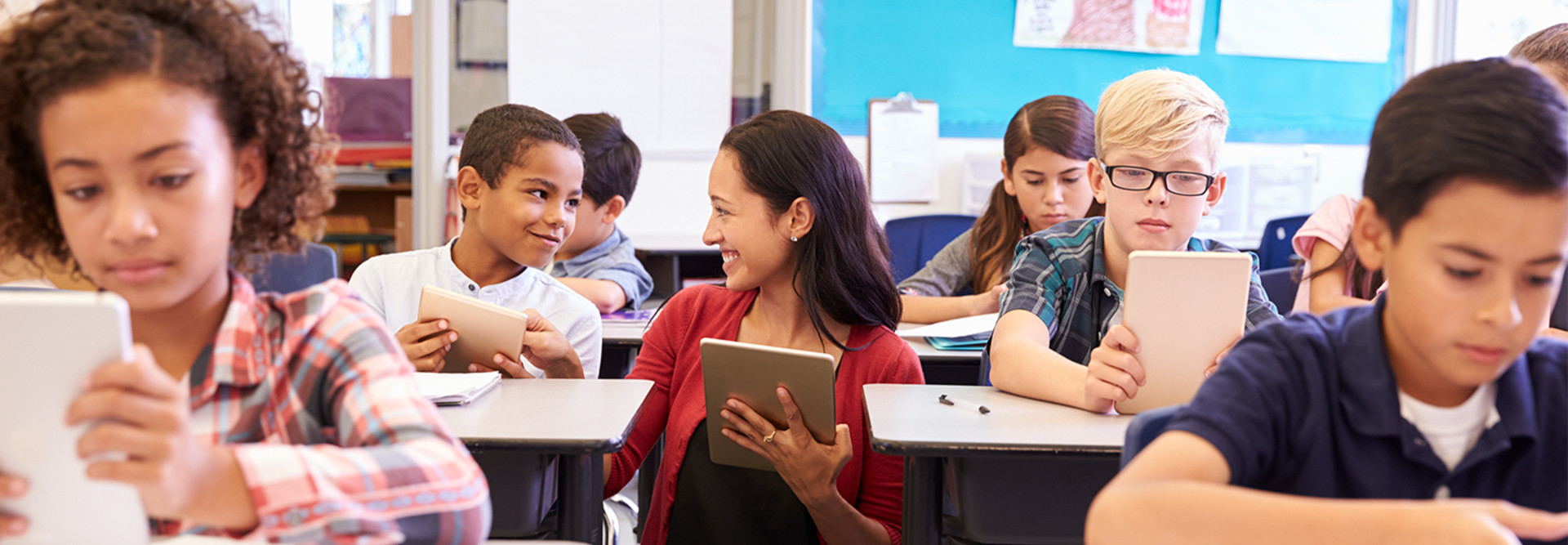New Global Survey Offers Snapshot of Technology in the Classroom
As K–12 educators prepare students for a world where change happens at a rapid pace, they use multiple tools to communicate lessons. More often than not, new classroom technology is implemented in conjunction with, rather than instead of, more traditional classroom tools, according to a new report from Cambridge International, which is based on an online survey of nearly 20,000 teachers and students (ages 12–19) from 100 countries.
The survey found that use of technology in schools worldwide continues to grow, with 48 percent of students reporting they use a desktop computer in the classroom. Forty-two percent use smartphones, 33 percent use interactive whiteboards and 20 percent use tablets. Yet the numbers remain high for more traditional modes as well, such as pen and paper (90 percent) and whiteboards (73 percent).
Desktop computers are used significantly more than tablets: The U.S. leads the way with 75 percent of classrooms using desktop computers.
Use of desktops, notebooks and tablets (think Asus Chromebook and Acer Chromebook Tab 10) frequently support the ongoing trend of gamification in education, the report states.
“Gamification makes learning more fun and engaging, and we find that it creates an environment where students are more apt to communicate and help each other,” says Nidhi Tassone, Acer America commercial marketing manager.
MORE FROM EDTECH: See how educators are using mobile devices to make a positive impact.
Smartphones Are Not Universal in K–12
One particular area of technology the survey highlighted as growing is smartphones. With mobile technology more integral to people’s lives, it’s predicted that smartphone use in the classroom could reach 55 percent in 2018 globally. The U.S. has already far surpassed that number and leads the world with smartphones, such as the Samsung Galaxy S9, used in 74 percent of classrooms.
Allowing smartphones in the classroom continues to be a source of debate for many educational authorities. The New York State Education Department lifted a 10-year ban on smartphones in schools in 2015, but the French government imposed a ban on the devices this past year in middle schools. Opponents’ concerns typically lie in the devices’ potential to distract and prevent communication with peers in the classroom; however, teachers continue to find new ways to use the tools to keep students focused on academics.
Another rapidly advancing classroom trend Tassone points to is the increasing popularity of immersive technologies like virtual reality and augmented reality.
“Students can use VR and AR for educational experiences like exploring museums and historical sites they normally wouldn’t be able to see, or conducting chemistry experiments in a safe, simulated lab,” Tassone says.
Technology’s impact on education continues for students outside of the classroom as well. The survey found that 64 percent of students use a smartphone to do their homework, and 65 percent do their homework on a notebook computer (that number rises to 85 percent in the U.S.).
The report ultimately finds both teachers and students rely on technology to add value to and enhance education. The expectation is that, in the future, students will develop greater autonomy in the learning process, selecting the technology that works best for them. Smartphones, laptops and desktops will clearly be part of that mix — alongside pen and paper.










